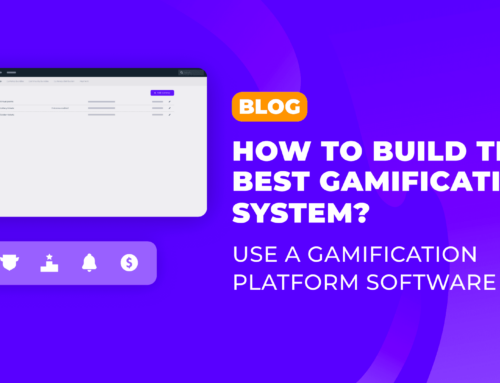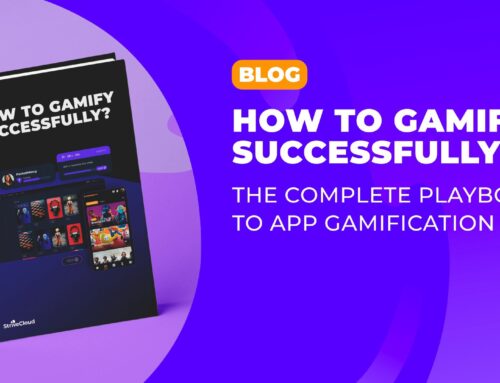How the greatest health apps use communities to boost user engagement
It’s no secret mhealth apps have the power to change healthcare forever. These apps can deliver highly personalized treatments at a massive scale, and lower cost. Solutions for blood-testing, fitness and even elderly care are being used to promote self-health management as we speak. Unfortunately, research by the Commonwealth Fund shows the majority of mhealth apps fail in boosting user app engagement.
In fact, the average retention rate for mobile health apps is only 3 months. With adoption this low, it’s hard to help users reach their health goals. Marc Van Mael, co-founder of Care4C says the main reason for low user app engagement is simply because the apps are too boring and undynamic to look at.
Luckily, this can be fixed with a little bit of creativity and data. How? Through gamification for health, you can make the user experience fun and engaging so your users will want to keep coming back!
Here’s what we’ll cover in this article:
- What is gamification for health?
- How to create peer communities with gamification for health apps?
- These mhealth apps are crushing it with gamification!
What is gamification for health?
In today’s world it’s hard to catch someone’s attention, and even harder to keep it. Gamification does two things. First, it leverages data to motivate your user and keep them moving forward. Secondly, it sets you apart from other apps that have a boring and uninteresting user experience. Think about it, what types of apps are best at captivating your attention? That’s right, games!
Gamification for apps 101
Gamification for apps doesn’t mean you have to turn your app into a game. What it actually means is you use game elements like rewards or leveling systems in a non-game context to boost user motivation and app engagement.
At first, you get users to take action by promising a big fat reward. They need to have a reason to participate in the first place. We call these rewards extrinsic motivators. These often refer to points or badges users get for completing an action. Rewarding users for certain actions create positive reinforcement, which helps to shape users’ behaviors and habits in a fun and engaging way.
Initially, we might be doing it for the reward, but after enough repetitions, the underlying emotions will come into play. We call this intrinsic motivation, either to gain something or avoid losing it. Let’s say you have been hitting your fitness targets for over 90 days in a row, you wouldn’t want to ruin that on day 91, right?
Want to learn more about the motivational science behind gamification? Check out our ‘What is Gamification’ page!
Why your mhealth app needs a peer community
People naturally are social animals. We’re driven by a sense of community or belonging. Whether it is to compete, or to collaborate, having a peer community can increase user and app engagement immensely.
In fact, research from over 300 mhealth apps confirms social networks give that needed extra boost of user motivation. Users start supporting or challenging each other to reach their goals. Some apps take advantage of gamification for apps to boost their community participation and interaction.
How to create peer communities with gamification for health apps?
So how do you go about building your own peer community? Well, there are lots of features you can use in gamification for apps. We’ll stick to those that are most relevant in building your health-focused community.
Leaderboard
Leaderboards quite literally visualize your ranking within the community. This is often based on the number of points you have already collected or specific actions you’re competing for. A leaderboard can motivate users to try and rank higher, or stay at the top.
Badges
Badges are virtual representations of achievements and reflect the progress that has been made since first getting on the app. It’s a form of positive reinforcement that also carries out in the community. You can connect with other users over the badges you have already collected, and the ones you have yet to collect.
Points & leveling system
Allowing your users to keep moving forward is essential to keeping them motivated. When users collect points for completing certain actions, these points often lead to a level up. Levels bring a social status with them. The higher your level is, the greater your status within the community. Oftentimes users with a higher level got there because they’re more engaged or have been active for longer.
Challenges
A challenge can serve as the initiating spark for user action. It’s often what gives the grunt work meaning. Once you’ve set a challenge in your community, users will want to achieve that goal. Seeing your peers start or complete these challenges gets you hyped up to participate yourself. Some apps even allow you to complete challenges in groups, so you collaborate or compete in teams!
What’s the easiest way to differentiate through gamification? Check out our app gamification platform!
These mhealth apps are crushing it with gamification!
The true power in gamification comes of course from combining all these elements into one fun user experience. It’s more than just a way of increasing user and app engagement. When done correctly it helps users stay motivated and on track of their health goals.
Here are two awesome examples:
How 7 Cups of Tea uses gamification for apps to motivate its community of listeners
7 Cups of Tea is a mental health app that works with a community of active listeners. The app has over 300,000 active listeners and has helped over 25 million mental health patients.
These listeners aren’t paid, however, they are rewarded through gamification for apps. Listeners can earn points for having conversations and level up when they have enough points. They can even collect badges for achievements such as having an extra-long conversation or meeting with a person for the second time.
How gamification for health helps the Fitbit community reach its goals better
Fitbit is a popular fitness tracker that comes with an app where you can measure your physical activity, heart rate, and sleep. It basically serves as your health assistant with tips and guides to help you reach health goals. On Fitbit, you have challenges where you can compete with other friends or people from the Fitbit community that have similar goals.
First of all, they have deadline-driven challenges such as a Goal Day, Workweek Hustle, and Weekend Warrior where you need to complete a target goal of steps. As you can see, all challenges get a name and narrative to increase the stakes and fun for participants.
For those who are a little more competitive, you can also join adventure races. Here you can follow a pre-set trail and compete against up to 30 friends to see who reaches the finish line first. You’ll get to discover new trails, uncover panoramic photos, and have the ability to collect fitness and health tips along the way.
Recap
Unfortunately, many of the mhealth apps that exist today have low retention rates, and user engagement drops significantly after just 30 days. Luckily, some apps have managed to break through the wall of motivation by building communities and using gamification for apps to spice up their normally boring and uninteresting health app.
The reason that gamification for health is such a powerful movement for mhealth apps, is because it tackles the engagement problem at the root. By making the end-user experience fun and exciting, patients are more involved and app engagement rises.
Adding game elements can also fuel a sense of community. For instance, getting the chance to collaborate or compete with peers for a place on the leaderboard, not only initiates user participation but keeps them engaged over time. If you’re a mhealth app it’s definitely worth looking into.



